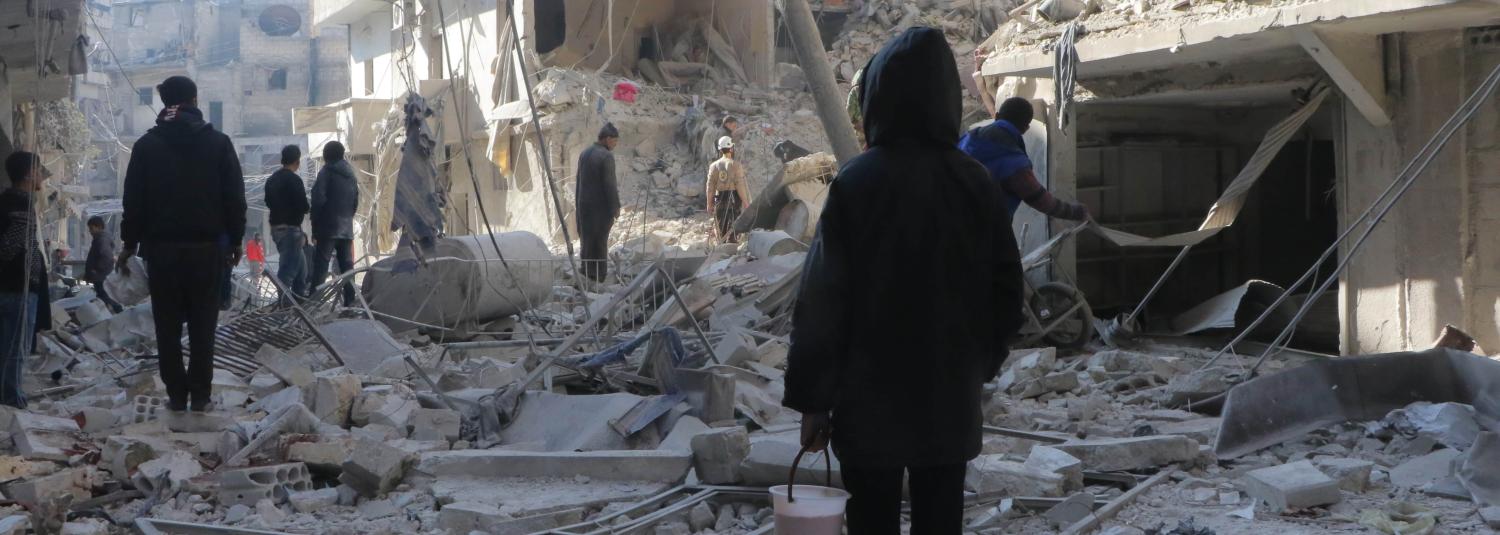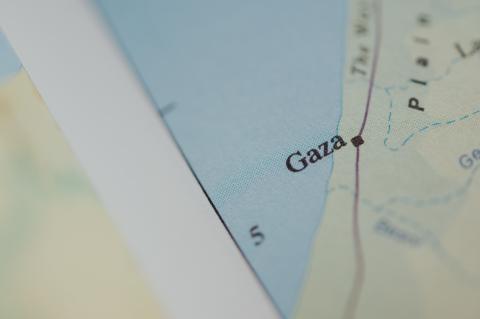The gradual isolation and strangulation of Aleppo is part of a much broader strategy that has taken shape over the past year, albeit in the case of Aleppo on a much different scale. The actions follow a familiar pattern: encirclement; cutting off military and life support functions; limited direct military engagement in favour of stand-off weapons to wear down the enemy and punish the civilian population housing them (whether reluctantly or otherwise); then a negotiated exit for fighters (with small arms although no heavy weapons) and their families, as well as unattached civilians. In August this year, when the town of Daraya capitulated, 700 fighters were moved to Idlib and 4000 civilians went elsewhere. In October around 1800 people (including 700 fighters) were removed from Mouadamiya, again to Idlib. This followed the evacuation of two towns to the north of Damascus earlier in October which resulted in 400 fighters and 1600 dependents moving to northern Syria.
These were all supporting lines of operation to the siege of Aleppo. The Assad regime seeks to re-establish control over Syria but knows it can’t generate enough combat power on its own to do so. However, if it demonstrates an inexorable momentum in re-establishing control over the most populated areas (including re-taking Aleppo) then it may well believe that it can cut deals in those areas it can’t reach in numbers. And if it can bottle up as many of the remaining fighters in Idlib as possible, they can be portrayed as either violent jihadis such as the al-Qa’ida-aligned Jabhat Fatah al-Sham, or groups supportive of them. Once they have been isolated in and around Idlib, the Syrian government narrative will focus on the threat posed by terrorist groups and the government's success in corralling them into the one province. The coalition can target the Islamic State terrorists in the east, while the regime does the same to the terrorists in the west.
This narrative will no doubt be presented vigorously and (as with all strong narratives) it will have a foundation in fact. The Coalition has been deploying air assets against radical Islamist targets in Idlib since late 2014, and most recently against a senior al–Qa‘ida cleric in Idlib in October this year. The Syrian regime will also no doubt feel that the more these groups are isolated in one area, where they are subject to air and ground attack, the more likely it will be that their lack of unity will come to the fore. There were instances of internecine conflict in Aleppo and, earlier this year, conflict between al-Nusra and non-Islamist groups in Idlib province. Contrary to the view in some quarters that fighting the common enemy may unify the rebel groups, their lack of unity has been one of the common themes of the civil war; Assad’s regime will not miss a chance to use the government’s momentum to maintain pressure in the hope that it can divide them and weaken their resistance from within.
There is unlikely to be any rush to take Idlib, however. A festering concentration of al-Qa‘ida aligned jihadis, Salafist and Islamist fighters and nationalist groups in the one province will suit Damascus’ purposes. And while Assad works out how to cut deals with Syrian Kurdish groups in the northeast and tribal groups in the east after Islamic State has collapsed, fixing as many armed elements as he can in Idlib will allow him to better concentrate his forces and maintain a coherent narrative for the outside world’s consumption. It will also provide yet another dilemma for the new Trump administration in Syria. Perhaps Damascus even views concentrating Islamist groups within Idlib as an argument Trump could use to present Assad as a force for stability. The battle for Aleppo has been widely covered, but it will be interesting to see how the world’s media explains the future conflict in Idlib and whose narrative ultimately dominates.
Photo: Getty Images/Anadolu Agency

